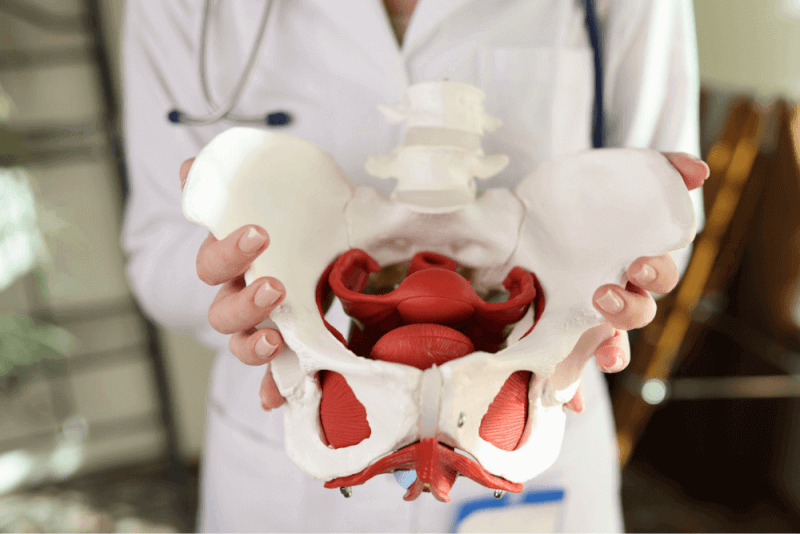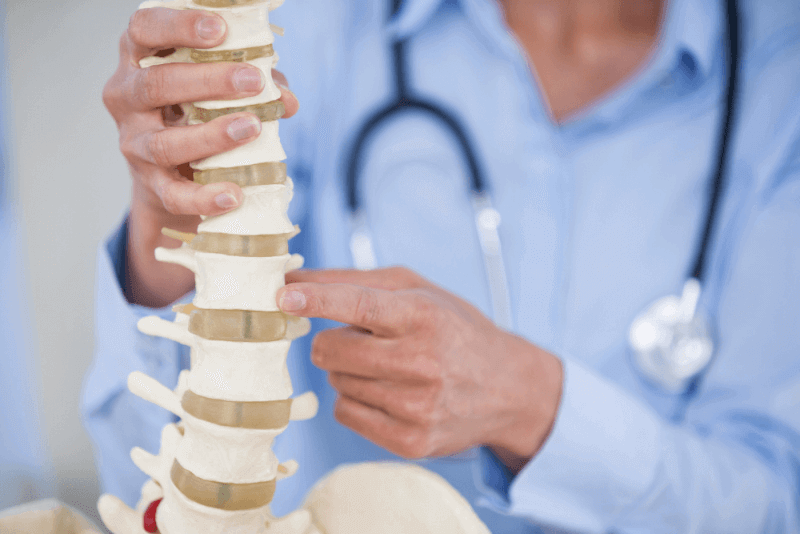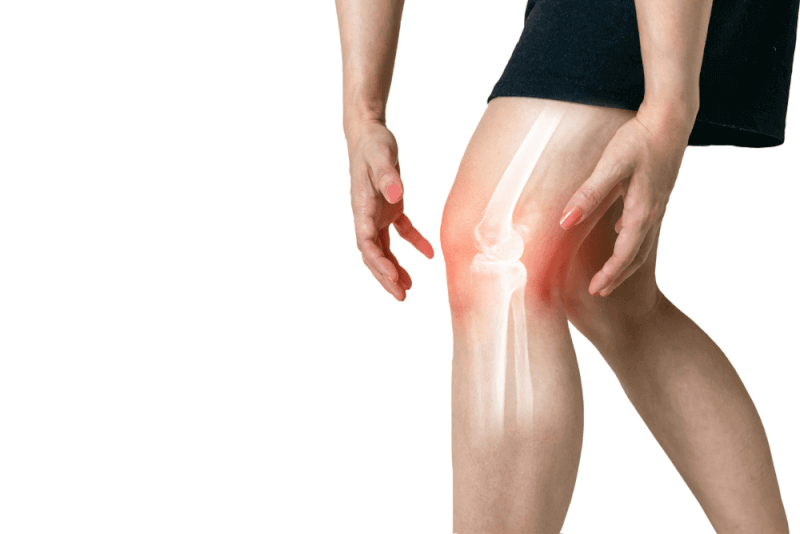What is a hip fracture?
Bone fractures that occur in the upper part of the femur bone are called hip fractures. Hip fracture, which ranks high among the reasons why elderly people apply to the emergency room, is more common due to osteoporosis seen with advancing age. For this reason, the incidence of hip fractures is increasing.
The hip joint is formed by the thigh bone and pelvis. The ball part of this ball and socket-shaped joint is formed by the femur, the thigh bone. The pelvis forms the nest and this structure is called the acetebulum.
Fractures that occur in the upper part of the femur bone are called hip fractures. These areas include the femoral neck, femoral head, lesser trochanter and intertrochanteric region and the regions five centimeters above this region.
Types of hip fractures
Hip fractures are divided into 4 different groups. The most common of these types are intertrochanteric and femoral neck fractures.
Femoral neck fracture
Femoral neck fractures, which can block the blood supply to the femoral head and are therefore among the serious fractures, occur just below the femoral head. It is divided into two as deplased (detached) and nondeplaced (undeplaced). The major effects of the obstruction of blood flow in femoral neck fractures are a longer healing time and necrosis.
Femoral head fracture
Femoral head fracture, which is rare, accounts for 1% of hip fractures. Femoral head fractures are also divided into two as displaced and nondeplaced. In addition, hip dislocation, acetebulum fracture and femoral neck fracture may accompany femoral head fractures after high-energy trauma.
Intertrochanteric fracture
It is the name given to fractures that occur in the intertrochanteric region, which is located at the lower part of the femoral neck and protrudes inward and outward. Fractures in this region may be nondeplaced fractures or may cause two or more comminuted fractures.
Subtrochanteric fracture
These fractures, which constitute 7% to 20% of hip fractures, occur in the subtrochanteric region. The subtrochanteric region is the upper initial region of the thigh bone.
Symptoms of hip fracture
The symptoms of a hip fracture can be sudden, or they can appear slowly over time and worsen over time. Symptoms of hip fracture include the following:
- Inability to stand
- Inability to put weight on the foot
- The knee or foot in the hip where the fracture occurs is turned inward or outward
- Bruising or swelling around the buttocks
- Pain when rotating the hip
- Pain radiating from the thigh bone to the knee
- Pain radiating from the hip to the leg
- Pain in the buttocks, thighs and groin area
- Inability to step on the leg and walk
- In femur fractures due to bone resorption, pain may be the only symptom.
Causes of hip fracture
Hip fractures are a health problem especially in older people. The biggest reason for this is the decrease in bone density and bone resorption with advancing age. For this reason, it is possible for older people to suffer hip fractures even with a simple fall. In some patients, fractures may occur spontaneously due to severe osteoporosis. Hip fractures in young people usually occur after trauma. Other causes that can lead to a hip fracture are as follows.
- Traffic accidents
- Falling from a height
- High energy trauma
- Sports injuries
- Gait disorders
- Loss of balance
How is hip fracture diagnosed?
Hip fractures can be easily diagnosed. The biggest reason for this is that the patient usually experiences severe pain in hip fractures and this pain prevents walking. In addition, the leg on the side of the fractured hip is shortened. If it is a displaced fracture, X-ray is sufficient for diagnosis. However, CT or MR imaging is necessary for diagnosis in nondeplaced fractures.
Hip fracture treatment method
The main goal of hip fracture treatment is to minimize the time the patient is bedridden. The only way to achieve this is through surgery. Non-operative treatments are preferred in patients whose general health condition is not suitable for surgery. However, these treatment methods are considered a last resort. Because in order to treat a hip fracture outside of surgery, the patient must remain in bed rest for a long time. This poses serious risks, especially for elderly patients. Non-operative treatment options are rarely preferred because of the serious risks involved.
Hip fracture surgery
If surgery is preferred in the treatment of hip fracture, the surgical method to be applied is determined by considering some criteria. Among these criteria taken into account are the following:
- Fracture site
- Type of fracture
- Degree of fracture
- Displaced or nondeplaced fracture
Once the characteristics of the hip fracture have been determined, the appropriate one of the two different surgical options is decided. The first of these options is femur fracture internal fixation surgery. For this surgery to be performed, the fracture must occur in the femoral region. Basically, the fracture site is held together with special hip nails, plate and screw systems.
Another surgical method used in hip fractures is total partial hip replacement. In this method, which is especially preferred in fractures with difficult union or displaced fractures, the bones in the socket of the pelvis and the femoral head are removed. These bones are replaced with prostheses. Total partial hip replacement surgeries are especially preferred in cases where femoral head fractures obstruct blood flow.
After hip fracture surgery, patients start walking with support on the day of surgery or the following day. In order to be discharged after surgery, patients should be able to perform movements such as climbing up and down stairs, sitting and standing up in a balanced manner and without difficulty. Patients whose health conditions are checked afterwards can be discharged.
Patients need rehabilitation after hip fracture surgery. In this way, while increasing mobility, it also strengthens the muscles and accelerates blood flow to the area.
It takes between 8 and 10 weeks for patients to fully return to their normal lives after hip replacement surgery. After nail fixation, screw or plate applications, patients may take up to 12 weeks to return to their normal life.
Walking after hip fracture surgery
Patients are usually ambulated within 6 to 8 hours after hip fracture surgery. The reason for starting walking early is to ensure that the joints work better and the prostheses fit into place. However, it is necessary to act consciously while walking. Otherwise, a wrong behavior may damage the prosthesis. Patients should definitely use compression stockings during the first walk. In addition, a physician specialized in the field of getting help from a walker should be present with the patient. Afterwards, it is necessary to ensure that the patient continues to walk at regular intervals.
Sports after hip fracture surgery
After hip fracture surgery, young patients can resume sports such as tennis, volleyball or swimming. However, jumping from a height or martial arts should not be practiced. Instead, sports that are less risky for the hip joint, such as walking or cycling, should be practiced. Otherwise, too much load is placed on the prosthesis and it may be damaged.
Symptoms of embolism after hip fracture surgery
Embolism is one of the most common symptoms after hip fracture surgery. Blood clots that form in the leg veins, especially in the heart or brain, can cause patients to face serious dangers. For this reason, patients need to use blood thinners for a while after hip fracture surgery. In addition, patients should regularly perform leg exercises after surgery to prevent the formation of blood clots. In case of embolism development after hip fracture surgery, the symptoms that may be seen in patients include the following:
- Hypertension
- Sudden fainting
- Increased heat in the leg
- Swelling and pain in the legs
- Palpitations (Tachycardia)
- Chest pain
- Shortness of breath
Care after hip fracture surgery in the elderly
Hip fractures in elderly patients cause much more serious health problems. This is because older patients’ fear of not being able to recover again makes the situation more traumatic. For these reasons, care of elderly patients after hip fracture surgery needs extra attention.
The first goal of hip fracture treatment is to stabilize the hip to reduce pain and prevent complications. Afterwards, functions need to be restored. For this, hip fracture surgery should be performed as soon as possible if the general health condition of the patients is appropriate. This period is usually 48 hours. This minimizes the risk of pressure sores and infection in patients.
After the surgery, rehabilitation of elderly patients should be started immediately. For this, horizontal freedom of movement should be ensured and rehabilitation should be started the day after surgery. Over time, with rehabilitation, patients should be able to move independently from bed to chair and finally, they should be able to use their full weight.
In addition, precautions should be taken against complications that may occur after hip fracture surgery. The most common complications in elderly patients include infection, delirium, embolism and malnutrition.
Delirium is the most common complication after hip fracture surgery in elderly patients. Delirium is a neuropsychiatric disorder with a rapid and fluctuating course that causes impairment in memory and cognitive functions of patients. Patients with previous cognitive impairment, visual and hearing impairment and taking too many medications increase the risk of delirium. For this reason, it is extremely important to intervene early. Early intervention will also lead to a faster physical recovery.
Another point to be considered after hip fracture surgery in elderly patients is the risk of embolism. Since the risk of embolism is very high, prophylaxis, i.e. blood thinning medication, should be applied. Patients should take their prescribed blood thinners regularly for at least 10 to 14 days after discharge.
Another complication in elderly patients is malnutrition, which occurs in 20% of patients undergoing hip fracture surgery. Patients in this period should especially pay attention to their protein intake. In this way, patients’ hospitalization time can be shortened and post-op complications can be reduced. In addition, urinary tract infections, pressure sores and pneumonia are also possible during the rehabilitation process.
It is extremely important that elderly patients receive complete and accurate care in many different aspects, from self-care to passive exercises, from medication monitoring to psychological support for a long time after hip fracture surgery. In this way, patients can return to their normal lives in a shorter time.
Symptoms of infection after hip fracture surgery
The risk of infection after hip fracture surgery is the same as in other surgeries. Knowing the symptoms of the infection will enable medical intervention in a short period of time, thus preventing greater health risks. Symptoms that can be seen in patients in case of infection after hip fracture surgery include the following:
- Swelling over the area
- Pain in the area
- Temperature
- Sensitivity
- Redness
- Pain in the whole body
- Increased fever
- Sweating
- Chills
The most important thing to do to minimize the risk of infection after hip fracture surgery is to pay attention to hygiene. In addition, the quality of life of patients must be maintained and the recommendations of doctors must be fully implemented. In addition, alcohol and smoking should be avoided. In case of infection in the area, the patient needs to be operated on again. To prevent this, the risk needs to be reduced as much as possible.











